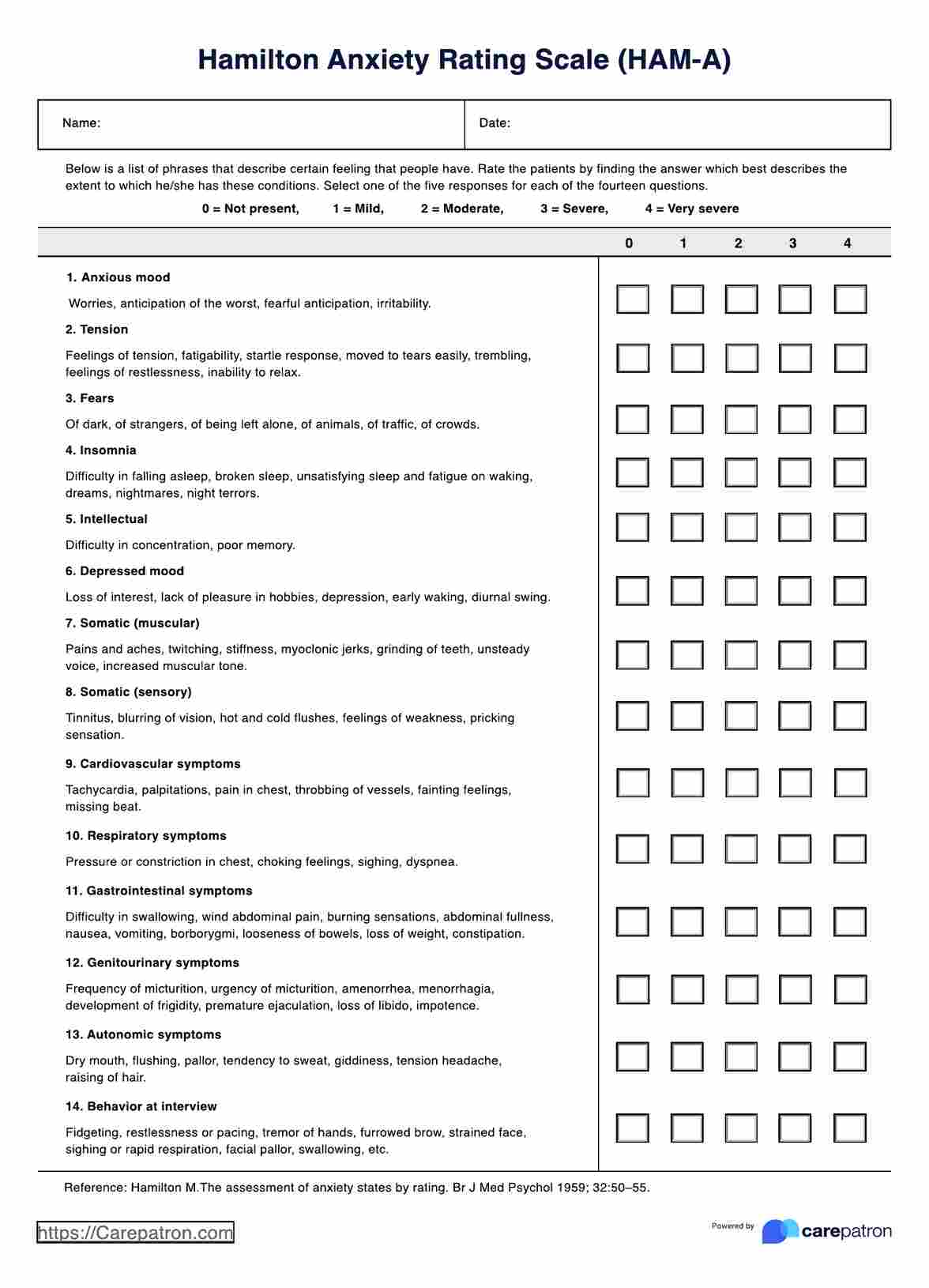The Hamilton Anxiety Rating Scale is primarily designed for use by trained mental health professionals. While it is accessible to anyone, interpreting its results accurately requires a background in psychology or psychiatry. Individuals without a medical background may find it challenging to understand the nuances of the scale and risk misinterpreting the results. Therefore, it's advisable to use this tool under the guidance of a qualified mental health practitioner.

Hamilton Anxiety Scales
The Hamilton Anxiety Scale evaluates the severity of a patient's anxiety disorder symptoms. Learn more about this tool through this guide!
Hamilton Anxiety Scales Template
Commonly asked questions
The highest possible score on the Hamilton Anxiety Rating Scale is 56. This score is obtained by summing the highest possible ratings (4) for each of the 14 items on the scale. A score of 56 would indicate extremely severe anxiety symptoms. However, it's important to note that such a high score is rare and typically signifies a need for immediate and comprehensive mental health intervention.
The Hamilton Anxiety Rating Scale measures the severity of a person's anxiety symptoms. It evaluates various aspects of anxiety, including mood, physical symptoms, cognitive aspects, and behaviors.
EHR and practice management software
Get started for free
*No credit card required
Free
$0/usd
Unlimited clients
Telehealth
1GB of storage
Client portal text
Automated billing and online payments











